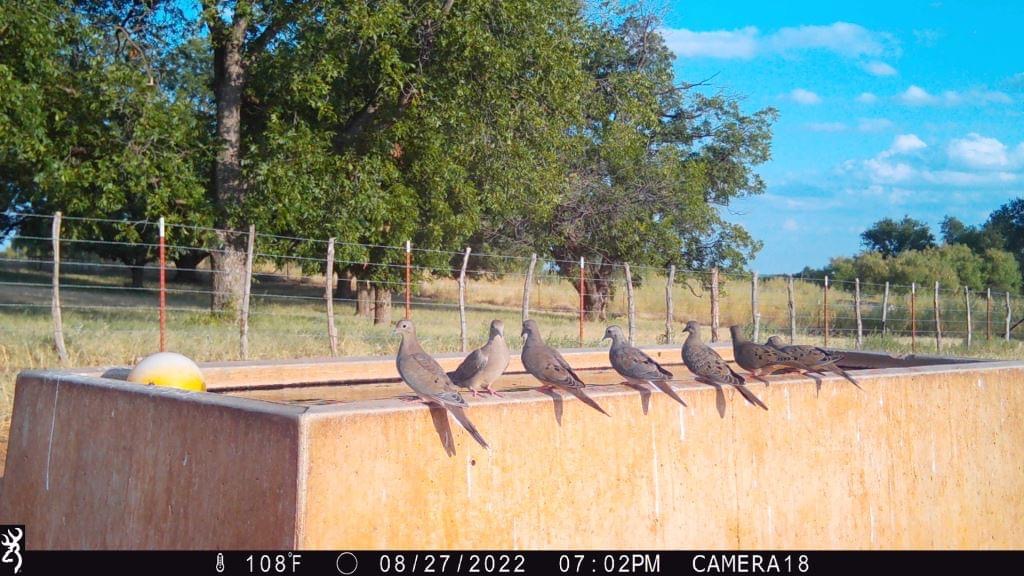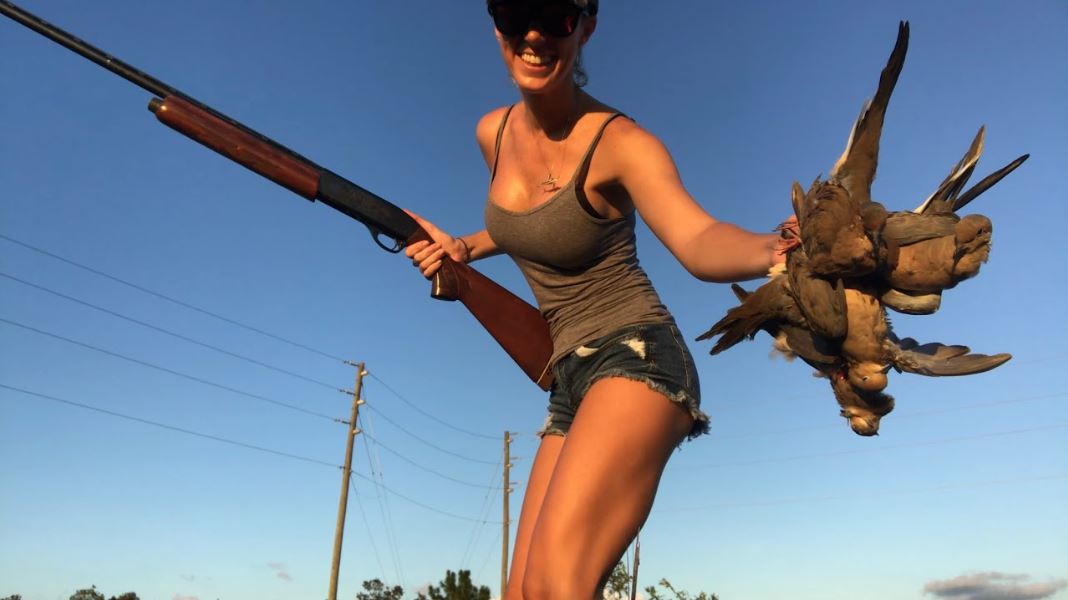Go-To Tips for Dove Hunting
It’s almost dove season here in Texas and there is nothing more fun than a good dove hunt. However, a lack of preparedness can mess up a good dove hunt before it event starts. In this article, we offer up 17 tips for dove hunting in Texas. Yep, we got you!
Texas is home to seven species of native doves and pigeons, including the three legal game species- mourning, white-winged and white-tipped doves. Texas accounts for 30 percent of the total mourning doves and 85 percent of the total white-winged doves harvested in the U.S. each year, far more than any other state.

17 Tips for Dove Hunting in Texas
Successfully hunting doves requires some planning, preparation, and understanding of dove behavior. Mourning doves and white-winged doves are fast and agile birds, making them challenging targets. However, with the right approach, you can increase your chances of a successful dove hunt. Here are some tips for dove hunting in Texas and beyond:
- Legal Considerations: Before you grab a gun, ensure you have the necessary hunting licenses and permits required for dove hunting in your area. Dove hunting in Texas always concurs with the need for a new hunting license. Sometimes the regulations change, too. Familiarize yourself with local regulations, hunting seasons, bag limits, and any specific rules for dove hunting.
- Scouting: Prior to the dove hunting season, scout the hunting area to identify dove flight paths, roosting sites, feeding areas, and watering holes. Look for locations with high dove activity. If you can’t get out beforehand, pay attention to what’s going on around you while you’re in the field. Go to where the doves are flying.
- Gear Preparation: Dove hunting is a relatively lightweight endeavor in terms of gear, but a big part of any hunt is having everything you need. Check out your gear before heading to the field and save yourself some headaches. The next three tips for dove hunting cover some essential equipment.
- Shotgun: A shotgun with an open choke, improved cylinder or modified, is recommended for dove hunting, as it provides a wider pattern for shooting moving targets. Check out your gun prior to your hunt.
- Ammunition: Use light loads of #7.5 or #8 shot. Most manufacturers sell these shot sizes specifically as dove loads. These smaller pellets are effective for taking down doves without causing excessive damage.
- Camouflage: I’ve been on dove hunts when camo was absolutely not required. However, it’s quite helpful and necessary most of the time, especially later in the season. Wear camouflage clothing that matches the hunting environment to blend in and avoid spooking doves.
- Decoys: Setting up a few dove decoys on branches or stakes can attract passing doves. Place them near your shooting location to make the doves feel more comfortable landing. This is particularly helpful to pull doves to within shooting distance.
- Hide or Blind: Set up a hide or hunting blind to conceal yourself from the doves’ keen eyesight. Typically, this means a natural brush blind, standing next to or within some brush, or even a portable blind can help you stay hidden.
- Concealed Movement: Doves are sensitive to movement, so remain as still as possible. Move slowly and avoid sudden motions that might alert the birds. I wait until birds are just about within distance before making a move or swinging on passing birds.
- Timing: Doves are most active during the early morning and late afternoon when they are feeding and drinking. Plan your hunts during these times for higher success rates. Morning hunts help avoid the hottest parts of the day, but evening hunts can be great around water.
- Water Sources: Doves need water to drink, so dove hunting near water sources such as ponds or rivers can be productive. These are especially good places later in the morning, mid-day, and late in the afternoon.
- Cover and Perches: Look for locations with trees, power lines, or other elevated perches where doves like to rest. These spots are ideal for setting up your blind or hide. If you have decoys, set them up in these sites to pull doves your way.
- Stay Silent: Doves have excellent hearing, so avoid loud noises, talking, and sudden noises that could startle them. This is not a huge problem until doves start to approach your immediate area, but doves are going to cut away as soon as you start yelling.
- Shoot Ahead: Doves are fast flyers, so lead your shots by aiming slightly ahead of the bird’s flight path to account for its speed. Ideally, you want to swing through as you shoot at passing doves, but many hunters stop the gun once the trigger is pulled. It you have a hard time swing through, aiming ahead can help.
- Retrieve Downed Birds: Keep an eye on where doves fall and retrieve them promptly. Doves are small and can blend in with the ground, so it’s important to locate them quickly. Avoid the temptation of shooting additional birds prior to picking up your down bird.
- Practice Shooting: Practice your shooting skills before the dove hunting season to improve your accuracy. Shooting clay targets or practicing with a shooting simulator can help you become more proficient. I can’t say enough about this one, and I think almost everyone needs more trigger time.
- Safety: This one is last, but should be on top of mind. Always prioritize safety. Be aware of other hunters in the area, and follow proper firearm safety rules at all times. Know where you can and can not shoot. Make sure those that you are hunting with know that, too.
Dove Hunting in Texas
Spring surveys conducted by Texas Parks and Wildlife Department (TPWD) staff found an estimated 28.3 million mourning doves in Texas, a 44 percent increase from 2022. White-wing dove populations have increased 20 percent, tying the record high with an estimated 11.7 million this year.
“This spring was about as perfect as it could be, with steady rains and cool weather,” said Owen Fitzsimmons, TPWD Dove Program Leader. “Given the population increases this year and the excellent breeding season conditions that persisted through the first half of the summer, hunters should expect to see a lot more birds on the landscape this September.”

Tip Your Hat to HOT Texas Dove Hunting
Dove hunting in Texas is hot. We hold a lot of birds and it’s generally temperature hot early in the dove hunting season. As daily temps typically top 100 degrees, hunters will likely find larger concentrations of birds at watering holes, and doves may be feeding earlier and later than normal to avoid the mid-day heat. In areas where agriculture has suffered from the heatwave, look for stands of common sunflower, croton and other native annual forbs and grasses.
Remember that dove hunting is not only about the harvest but also about enjoying the outdoors and respecting the natural environment. Hunting responsibly and ethically is essential for preserving the experience for future generations. We hope this list of tips for dove hunting in Texas help prepare you for your next trip afield.